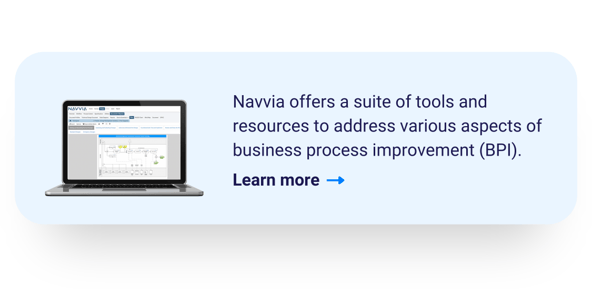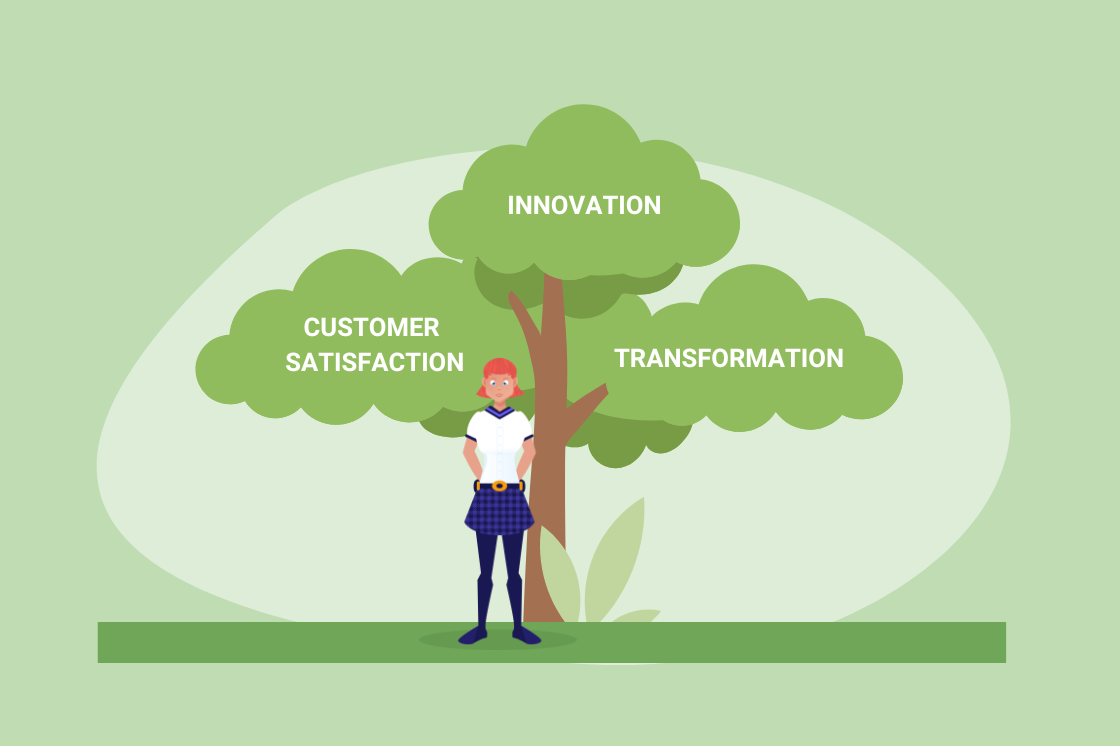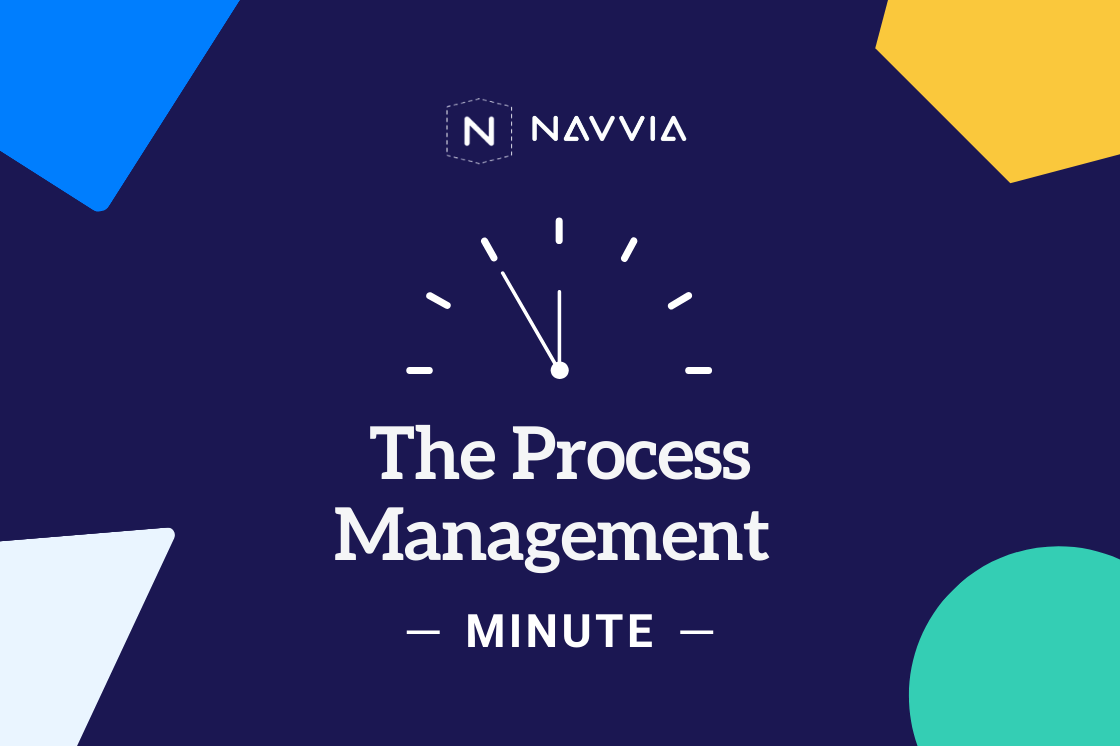Mastering Business Process Improvement
Business Process Improvement is a vital strategy for organizations looking to enhance their operations and drive sustainable growth. By continuously analyzing and refining processes, businesses can streamline their workflows, reduce inefficiencies, and deliver greater value to their customers.
What is Business Process Improvement?
Business Process Improvement (BPI), also called Continual Process Improvement, is the systematic approach of identifying, analyzing, prioritizing, and implementing incremental improvements to your business processes. The goal is to eliminate waste and improve efficiency, productivity, and quality.
Business Process Improvement is not an isolated activity. It works closely with every element of the Business Process Management (BPM) cycle including Process Discovery, Process Mapping, Process Automation, Process Execution and Process Governance.
To be effective, process improvement must be integrated into all key business processes and ingrained in the culture of your organization. That's why it's often referred to as continuous process improvement.
How to Identify Process Improvement Opportunities
Continual Process Improvement is a fundamental component within the BPM cycle, seamlessly aligning and interacting with the other five elements.
Opportunities for improvement can be found during each phase of the BPM Cycle. Click on the links to learn more about each element.
- Process Discovery involves identifying and categorizing the various processes within an organization based on their business value. This can be done through interviews, workshops, and with the help of process discovery tools. The goal is to create an As-Is map of the process which can be used to identify issues and uncover opportunities for process improvement.
- Process Mapping is a visual representation of a current or future state process that lays out the flow of work, the interaction between all parties, inputs and outputs, along with any supporting tools and technology. The map can be analyzed to identify issues and recommend process improvements.
- Process Automation involves using technology to automate and streamline manual tasks, enhancing productivity and reducing errors. It can also be used to automate process improvements identified during other phases of the BPM cycle.
- Process Execution involves the implementation, operation, and management of your business processes. This phase requires strong leadership, clear communication, and effective coordination among team members to ensure that the processes are smoothly integrated into the daily operations of the organization. Process execution is the point where the planned process improvements are put into action.
- Process Governance is where processes are aligned with organizational goals to mitigate financial, regulatory, and operational risks. Accountability, policies, controls, and process performance are tracked and measured by process governance, which is the foundation of many process improvement initiatives.
- Continual Process Improvement is the phase of the Business Process Management cycle focused on the identification, analysis, planning and tracking of business process improvements. Think of it as the management of improvement initiatives from the other phases of the BPM lifecycle.
Business Process Improvement Methods
The key to Business Process Improvement lies in adopting a systematic approach of identifying, analyzing, prioritizing, and implementing incremental improvements.
There are a variety of business process improvement methods available.
- PDCA Cycle (Plan, Do, Check, Act): The PDCA Cycle, also known as the Deming Cycle, is a powerful tool for driving continuous improvement within organizations. This four-step management method involves planning, executing, evaluating, and acting upon processes and products to ensure ongoing enhancement and success.
- DMAIC (Define, Measure, Analyze, Improve, Control): DMAIC is a structured and systematic approach to process improvement that is widely used in the business world. This methodology involves clearly defining the problem or goal, measuring key metrics to establish a baseline, analyzing data to identify root causes of issues, implementing improvements based on findings, and establishing controls to sustain the improvements over time. By following the DMAIC framework, organizations can effectively identify opportunities for enhancement, optimize their processes, and drive continuous improvement in their operations.
- ITIL 4 Continual Improvement Model: This is a key component of the ITIL 4 framework, which is used to manage and optimize IT services. It is a structured approach to continuous improvement that focuses on identifying opportunities for improvement, analyzing and evaluating the potential impact of these improvements, and implementing changes in a controlled and efficient manner. This mode is designed to help organizations achieve their business goals by continuously improving their IT services and processes.
- Six Sigma Methodology: Six Sigma Methodology is a data-driven approach that focuses on improving processes by meticulously identifying and eliminating the root causes of defects and minimizing variability in both manufacturing and business operations. By employing statistical analysis and quality management tools, organizations can pinpoint inefficiencies and areas of improvement to enhance overall performance and deliver consistent, high-quality products and services to their customers.
- Total Quality Management (TQM): A management approach to long-term success through customer satisfaction that involves all members of an organization in improving processes, products, services, and the culture in which they work.
- Continuous Improvement (Kaizen): Continuous Improvement (Kaizen) is a proven approach that emphasizes making small, incremental changes to processes in order to enhance efficiency and quality over time. By continuously seeking out areas for improvement and implementing small adjustments, organizations can create a culture of constant innovation and refinement. This approach fosters a mindset of continuous learning and growth, driving sustainable success for the organization.
Creating a Culture of Continuous Improvement
Creating a culture of continuous business process improvement starts with strong leadership and clear communication. Leaders must champion the importance of process improvement and empower employees at all levels to actively participate in identifying opportunities for enhancement.
By fostering a collaborative and innovative environment, organizations can encourage employees to share their insights, ideas, and feedback to drive continuous improvement efforts forward.
In addition, providing ongoing training and development opportunities for employees can help build the skills and knowledge needed to effectively analyze processes, implement changes, and measure results. By investing in the professional growth of their workforce, organizations can cultivate a culture of continuous learning and improvement.
Furthermore, recognizing and celebrating successes along the way can help reinforce the value of process improvement efforts and motivate employees to continue striving for excellence. By highlighting the positive impact of their contributions, organizations can inspire a sense of pride and ownership in the improvement process.
Ultimately, creating a culture of continuous business process improvement requires a commitment to transparency, collaboration, and innovation. By fostering a workplace where continuous improvement is not just a goal, but a way of life, organizations can drive sustainable growth and success in the long run.
Embarking on the journey to improving your business processes begins with embracing the Business Process Management cycle, then selecting a process improvement methodology, and fostering a culture of continual improvement.


